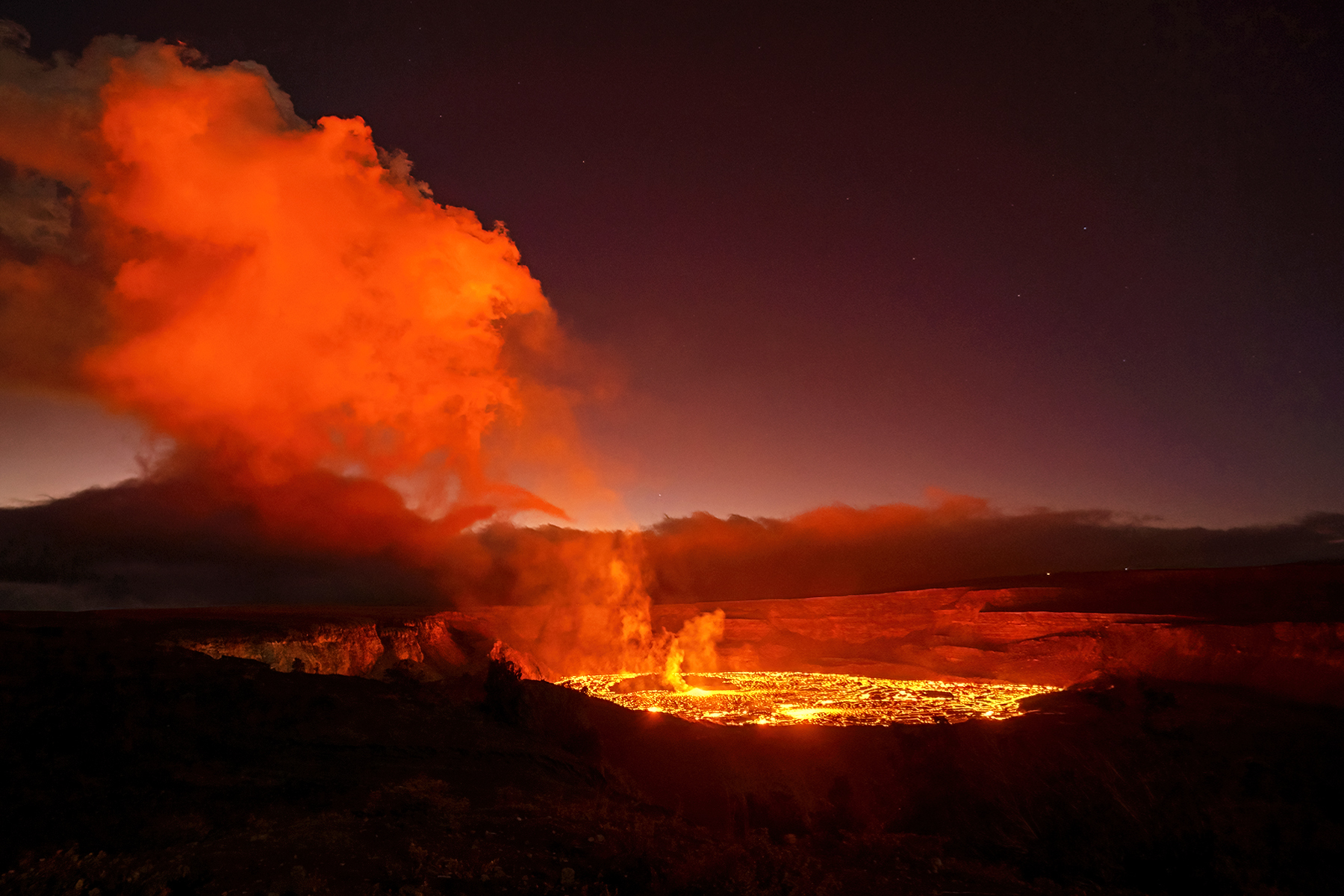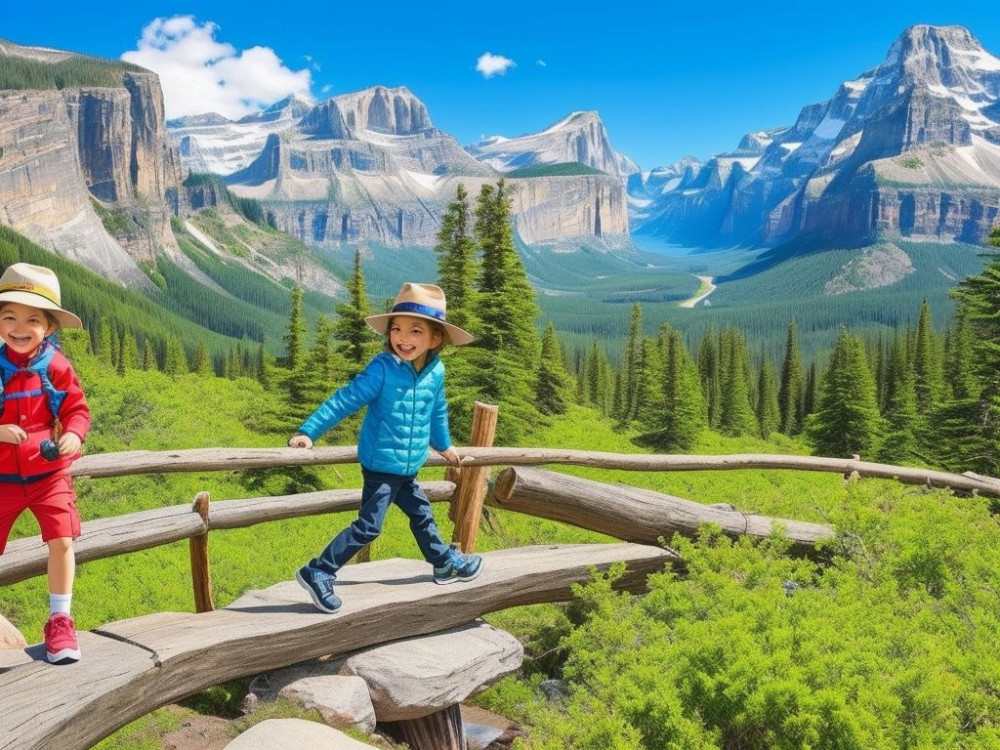Searching for the perfect nature getaway? Hawai’i Volcanoes National Park is the answer! Marvel at the amazing sights and experience thrilling activities! Lava trails, scenic hikes and lush rainforests await you. Come explore the park with us!
Introduction
Hawai’i Volcanoes National Park is a remarkable destination that mesmerizes with its awe-inspiring volcanic landscapes. This national park offers an amazing glimpse into the dynamism of Earth.
Kīlauea and Mauna Loa, two active volcanoes, showcase the power and beauty of nature. From glowing lava flows to steaming craters, these wonders create a memorable experience.
The park also has a rich biodiversity. It’s home to rare species like the nēnē and the Hawaiian happy face spider. Exploring the rainforests and lava fields, you can witness the resilience of life on this island.
The park was established in 1916, making it one of the oldest US national parks. It was created to protect the geological features. Now, it’s a symbol of conservation and environmental stewardship.
This captivating national park stands as a testament to the ever-changing Earth. It has educational opportunities and unparalleled natural beauty. Hawai’i Volcanoes National Park promises an extraordinary adventure for all who come. It’s like walking on fire – in a thrilling, but non-literal way.
Location and History
Hawaii Volcanoes National Park is in the Hawaiian Islands and has a rich history. It was once home to indigenous Hawaiians, and now showcases volcanic activity. This special place draws visitors from around the world.
The park is on the island of Hawaii. Visitors can witness nature’s power with two active volcanoes – Kīlauea and Mauna Loa. The park has tropical rainforests, lava fields, and diverse ecosystems – an amazing contrast.
Hawaii Volcanoes National Park has a fascinating history. Ancient Hawaiians considered the volcanoes to be special, and European explorers documented the eruptions and learned about volcanoes.
Kīlauea volcano in the park has been erupting since 1983. Scientists from the Hawaiian Volcano Observatory monitor the volcano to keep visitors safe.
Hawaii Volcanoes National Park is a great place for adventurers who want an educational and amazing experience. So forget the tanning salon – the volcanic ash facial awaits!
Geography
Head to Hawai’i Volcanoes National Park for a sizzling adventure! Home to two active volcanoes, Kīlauea and Mauna Loa, this park offers unique opportunities to explore its stunning landscapes. From lava fields to lush rainforests, you won’t be disappointed.
Check out the features of the park in this table:
Geographic Features
| Geographic Feature | Description |
|---|---|
| Kīlauea | World’s most active volcano |
| Mauna Loa | Earth’s largest volcano by volume |
| Crater Rim Drive | Scenic encircling Kīlauea Caldera |
| Chain of Craters | Chain of volcanic craters stretching 20 miles |
| Thurston Lava Tube | 500-year-old cave formed by lava flows |
Discover the wonders of the park safely with these tips:
- Visit the visitor center: Stop by Kilauea Visitor Center or Jaggar Museum to get insights on geology, history & safety.
- Take a guided tour: Join a tour or hike to explore the scenery & learn about volcanic processes.
- Stay updated: Check with rangers or online sources for volcanic activity updates before you go.
So what are you waiting for? Get your hiking boots ready for an incredible experience in Hawai’i Volcanoes National Park!
Climate
The climate in Hawai’i Volcanoes National Park is mild with high humidity. Rainfall varies throughout the year.
For example, in January the average temperature is 68 Fahrenheit and rainfall is 2.8 inches. In February, the temperature is still 68 Fahrenheit, but the rainfall decreases to 2.5 inches.
Areas at higher elevations may experience cooler temperatures and more rain than lower elevations. The park even has microclimates due to varying elevations, trade winds, and volcanic activity.
The National Park Service estimates that Hawai’i Volcanoes National Park receives an average of 120 inches of rainfall per year. So, be prepared for a unique climate experience when you visit!
Don’t forget to benefit from the natural shade and camouflage of the park’s flora and fauna – no temperature-resistant sunscreen required!
Flora and Fauna
Hawai’i Volcanoes National Park is aflame with life – from hardy ferns to vibrant orchids, ‘Apapane and ‘I’iwi birds, and even endangered species like the Hawaiian hoary bat and Nene goose. There’s also a hidden treasure trove of rare insect species, including endemic beetles found nowhere else in the world.
The ‘Ōhelo berry is an amazing example of nature’s resilience. After a devastating eruption in 1959 burned most of its habitat, experts thought it had vanished – until small populations were discovered growing on cooled lava flows deep within the park. Now, great efforts are being made to conserve and protect this once-lost species.
Hawai’i Volcanoes National Park is a reminder that life can still thrive even in the harshest environments. Get ready to roast some marshmallows and bask in the majesty of nature’s resilience!
Ecosystem
The Hawai’i Volcanoes National Park is alive with diverse organisms. This ecosystem has many plant and animal species, all connected in a delicate balance.
To show the variety of life, we’ve created a table of organisms that live in the park. These include plants, birds, mammals, reptiles and insects.
Organisms in the Park
| Category | Organism |
|---|---|
| Plants | Ohia Lehua |
| Birds | Apapane |
| Birds | Nene |
| Birds | Pueo |
| Reptiles | Chameleon |
| Birds | ‘I’iwi |
| Birds | ‘I’o |
| Mammals | Hoary Bat |
| Reptiles | Green Sea Turtle |
| Insects | Hawaiian Happy Face Spider |
| Plants | Mauna Loa Silversword |
| Birds | Amakihi |
| Mammals | Hawaiian Monk Seal |
| Reptiles | Jackson’s Chameleon |
| Insects | Kamehameha Butterfly |
There are also special species that only live in this park. They need extra help to stay safe.
Visiting Hawai’i Volcanoes National Park is an amazing experience. See the incredible beauty and wildlife for yourself. Plan your visit now!
But remember, conservation means not planking on active volcanoes!
Conservation
Visiting Hawaii Volcanoes National Park is a must-do for any nature-lover! Conservation efforts are crucial to preserve its unique ecosystems. This includes habitat restoration, controlling invasive species, and promoting sustainable tourism.
For example, initiatives focus on restoring habitats to protect native plants and animals. Plus, actively controlling invasive species helps maintain the delicate balance of its ecosystems. And, sustainable tourism practices are encouraged to minimize the impact on natural resources and cultural sites.
Be part of the noble cause and help preserve this remarkable natural wonder for future generations! When visiting, be sure to respect the environment and practice responsible tourism. Don’t miss out on the hot and steamy recreation this park offers – with a side of lava, of course!
Recreation
Hawai’i Volcanoes National Park offers recreation activities for everyone to explore and engage with its unique natural environment. Hiking, camping, biking, and horseback riding are all options.
Hiking is a great way to enjoy the park. There are over 150 miles of trails, with lush rainforests, volcanic craters, and lava fields. Wildlife sightings and spectacular views await.
Camping is popular here. Pitch a tent, park an RV, and spend a night under the stars. Connect with the land and enjoy its magnificence.
Biking and horseback riding let you cover more ground while admiring the scenery.
A couple experienced the park’s excitement firsthand. They hiked a trail through lush rainforests to a viewpoint overlooking an active volcano. The fiery lava flow cascading down into the ocean was an awe-inspiring moment that they’ll treasure forever.
Tourism
Hawai’i Volcanoes National Park is a hot spot for tourists wanting adventure and beauty. With its astounding views, remarkable volcanic landscapes, and diverse wildlife, it is an experience of a lifetime.
Exploring the park gives tourists the chance to see nature’s power. From the grand volcanic peaks to the blazing lava flows, each part of the park is like a book about the Earth’s evolution. Hiking one of the trails offers amazing sights and an understanding of Hawai’i’s culture.
A special part of visiting Hawai’i Volcanoes National Park is witnessing volcanic activity. Kilauea Volcano, one of the world’s most active, has been erupting since 1983. This gives visitors the exclusive chance to observe this incredible natural phenomenon.
Data from the USGS shows over 250,000 people visit the park each year to see the volcanic scenery and eruptions. This proves the interest and curiosity this park holds for travelers from all around the globe. The future of Hawai’i Volcanoes National Park is as unpredictable as a geologist playing a game of lava-hot potato.
Future
Hawai’i Volcanoes National Park’s future is full of possibilities. It’s a haven for geologists, researchers and nature lovers. Its volcanoes and ecosystems are invaluable sources of knowledge.
Conservation efforts will protect this special place. Monitoring volcanic activity and studying the park’s wildlife are important. Technology helps us understand the park’s geological wonders.
A group of volcanologists ventured inside the fiery Kīlauea Volcano. It was an amazing sight! This experience reminds us why conservation matters.
The future of the park is full of science, preservation and captivating stories. They will help us uncover the secrets of the planet’s fiery beginnings.
FAQ
Where is Hawai’i Volcanoes National Park located?
Hawai’i Volcanoes National Park is located on the Big Island of Hawai’i, in the state of Hawai’i, United States.
What are the park’s operating hours?
The park is open 24 hours a day, 365 days a year. However, some areas and facilities may have different operating hours, so it’s best to check the official website for details.
Are there any entrance fees for visiting the park?
Yes, there is an entrance fee for visiting Hawai’i Volcanoes National Park. The current fee is $30 per vehicle, valid for 7 days. There are also separate fees for pedestrians, motorcycles, and bicycles.
Can you hike on active volcanoes in the park?
While it is not safe to hike directly on active lava flows, there are several hiking trails in the park that provide views of volcanic activity, such as the Kīlauea Iki Trail and the Crater Rim Trail. It’s important to follow park guidelines and stay on designated trails for your safety.
Are there camping facilities available at the park?
Yes, there are campsites available for camping at the park. The Nāmakanipaio Campground offers both tent and RV camping, and reservations can be made in advance. There are also backcountry campsites for those who prefer a more remote camping experience.
Can you see lava flowing into the ocean at the park?
Yes, it is sometimes possible to see lava flowing into the ocean at the park. However, volcanic activity and lava flows are unpredictable, so it cannot be guaranteed. The best way to stay updated on current volcanic activity is to check the park’s website or visitor center.




Leave a Reply